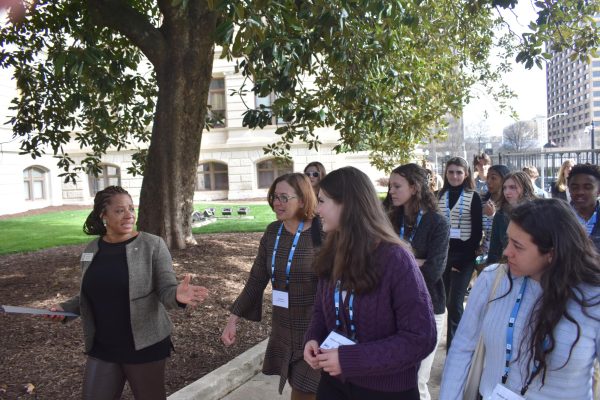All the Bright Places: Movie Review
More stories from Ellie Spears
Many teens struggle with mental health issues. The movie All the Bright Places, based on the book by Jennifer Niven, gives the viewer a first-hand look at the challenges teens face.
The movie features Theodore Finch and Violet Markey who are both struggling with their mental health. Finch, played by Justice Smith, is struggling to cope with his troubled past. Violet, played by Elle Fanning, is grieving the death of her older sister, Eleanor.
Finch finds Violet on the bridge where her sister died in a car crash, the night of what would have been Eleanor’s 19th birthday. He stops her from jumping to her death. After he saves her life, Finch feels it’s his responsibility to ease her back into her life before the crash.
While working on a school project, the two embark on adventures that allow them to see the world around them. These “wanderings” spark a romance as the two are able to discuss their pasts and face their problems head-on. The audience is brought along the journey of recovery as the two teens are able to form a mutual understanding. What Violet does not realize until it is too late is Finch was doing everything he could to save her when he was struggling himself.
The movie shows extreme character development. In the beginning, Violet is prepared to die, standing on the ledge of a bridge, but at the end, she learns although she was not okay she was able to find herself again. She learned to find what was good in the world through Finch’s help.
The plot of the movie is sadly something too many teenagers face. According to the Population Reference Bureau, suicide is the second leading cause of death among high school age students. Suicide can sometimes seem like the only solution when teenagers don’t know who to turn to for help.
In All the Bright Places, Violet, unlike so many teens, had a stroke of luck when Finch ran into her on the bridge. Having someone show they cared helped Violet move on from her sisters’ death.
Both heart-warming and heart-wrenching story of love and growth shows teens that it is okay to not always be okay.
As Violet says in the final scene, “It’s ok to get lost, as long as you find your way back.”



